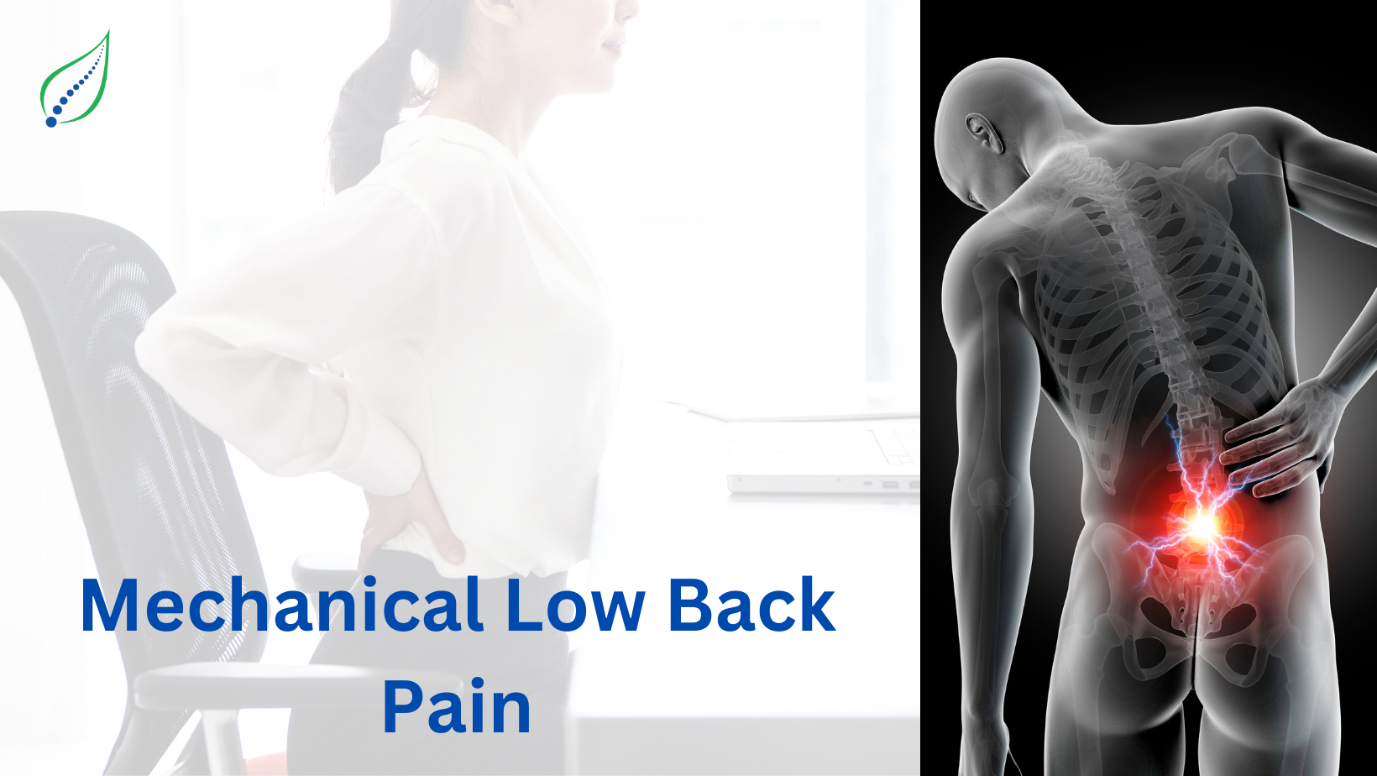Mechanical Low back pain
Mechanical low back pain is a type of back pain that is related to the mechanical structure of the spine, muscles, and nerves. It is the most common type of low back pain and is often caused by strains, sprains, or injuries to the muscles, ligaments, and discs of the back.
Symptoms of mechanical low back pain typically include pain, stiffness, and limited mobility in the lower back. The pain may be aching or sharp, and it may radiate down the legs. The pain is usually worse with movement and may be alleviated with rest.
Mechanical low back pain can be caused by a variety of factors, including poor posture, improper lifting techniques, repetitive motions and sedentary lifestyle.
Causes of Mechanical Low Back Pain:
Mechanical low back pain is typically caused by strain or injury to the muscles, ligaments and joints of the lower back. Some common causes include:
- Poor posture: Poor posture, especially when sitting or standing for long periods, can put excessive strain on the lower back muscles and cause pain.
- Muscle or ligament strain: Strains or sprains in the muscles or ligaments of the lower back can cause pain and stiffness.
- Herniated or bulging discs: A herniated or bulging disc can put pressure on the nerves in the lower back, causing pain, numbness, and weakness.
- Degenerative disc disease: As we age, the discs in our spine can wear down, causing pain and stiffness in the lower back.
- Osteoarthritis: Osteoarthritis is a type of arthritis that affects the joints in the spine, causing pain and stiffness.
- Spondylolisthesis: Spondylolisthesis is a condition in which one vertebra slips forward over the one below it, causing pain and nerve compression.
- Obesity: Being overweight or obese can put extra strain on the lower back muscles and cause pain.
- Repetitive motion: Repeated bending, lifting, or twisting can strain the lower back muscles and cause pain.
- Sedentary lifestyle: A sedentary lifestyle with little to no physical activity can weaken the lower back muscles and cause pain.
Symptoms Of Mechanical Low Back Pain:
The symptoms of mechanical low back pain can vary from person to person, but commonly include:
- Pain: Pain in the lower back is the primary symptom of mechanical low back pain. The pain can be mild, moderate, or severe and may feel like a dull ache or a sharp stabbing pain. The pain may also be described as throbbing, shooting, or burning.
- Stiffness: Stiffness in the lower back may make it difficult to move, bend, or twist. This stiffness is often most noticeable in the morning or after prolonged periods of sitting or standing.
- Limited mobility: Mechanical low back pain can make it difficult to move freely, and it may be challenging to perform daily activities such as walking, sitting, or standing.
- Radiating pain: The pain may radiate from the lower back into the hips, buttocks, and legs. This pain is often described as a shooting or burning sensation and may be accompanied by numbness, tingling, or weakness in the affected area.
- Muscle spasms: Muscle spasms in the lower back can cause sudden, intense pain that may make it difficult to move or perform daily activities.
Treatment:
Non-surgical treatment with limited rest and over the counter pain relievers is sufficient treatment for most patients. Other treatments include :
- Ice or heat: Applying heat and ice alternately to the back is helpful to relax the muscles and decrease muscle inflammation. In general, apply heat for 20 minutes, and then apply ice for 20 minutes. If you find that one application is more helpful than the other, then use only that application.
- Non-steroidal anti-inflammatory drugs (NSAIDs) such as ibuprofen or naproxen are available without prescription and may be used to reduce pain. Stronger prescription pain relievers are rarely required.
- If there is a muscle spasm, a muscle relaxant may be prescribed for a short time (3 to 4 days).
- Home exercise programs with the help of a Physical Therapist. Doctors recommend early physical activity to promote rapid recovery from back pain. For moderate to mild back pain, some patients are encouraged to maintain a near-normal schedule from the onset.
- Physical therapists can also work on correcting muscle stiffness and weakness. They can also advise on good posture/lifting technique and correct computer workstation set up.
- Posture Correction therapy: Ergonomics may help to correct the posture and maintain the bodily health.
- Braces: Lumbo-Sacral Support Belt/Braces helps to stabilize the back by providing support while doing activity or travelling.

_1747226427_1751827070.png)
_1744793045_1751827442.png)
_1743751136_1751830603.png)
